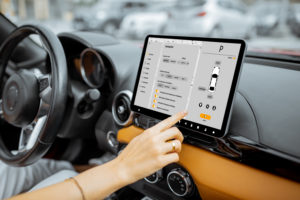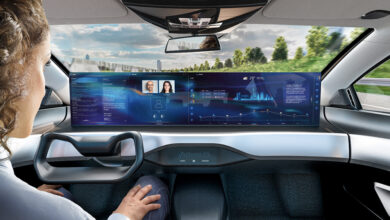Connected Car Market Expected to Slow in 2020
 After years of consistent growth, the connected vehicle industry will face a 15% decline in shipments and flat revenues in 2020, according to a recent report from ABI Research, a global tech market advisory firm. However, both embedded and aftermarket segments will see accelerated growth in 2021, and sales should return to trend in early 2022. ABI Research expects 115 million global connected car shipments, and a market value of US$83 billion in 2025.
After years of consistent growth, the connected vehicle industry will face a 15% decline in shipments and flat revenues in 2020, according to a recent report from ABI Research, a global tech market advisory firm. However, both embedded and aftermarket segments will see accelerated growth in 2021, and sales should return to trend in early 2022. ABI Research expects 115 million global connected car shipments, and a market value of US$83 billion in 2025.
“While standard fitment of cellular emergency systems and free trial subscriptions of connected services are responsible for robust connectivity penetration in the few vehicles that have been commercialized this year, the enormous contraction in new vehicle sales due to COVID-19 will make 2020 a flat year for connected cars,” explains Maite Bezerra, Smart Mobility and Automotive Analyst at ABI Research.
Despite shipments of vehicles with embedded connectivity dropping by 19% in 2020, the sector will still be responsible for at least 30 million new connected vehicles on the road this year. In the USA, 91% of new vehicles sold in 2020 will be connected, against 51% in Asia-Pacific and 37% in Latin America. In contrast, the aftermarket segment will contract by only 12% year-over-year, with the impact having been softened by lower hardware prices and increased demand from drivers of older vehicles with no embedded connectivity. The connected car industry will resume consistent growth from 2021 and achieve a market value of US$75 billion in 2023. Asia-Pacific is the region with the highest potential, reaching US$27 billion in revenues in 2025, followed by North America with US$21 billion in revenues.
Within the infotainment sector, OEMs are investing in more and larger displays in the car. For instance, the Porsche Taycan has a 16.8-inch instrument cluster display, a central 10.9-inch infotainment display, an 8.4-inch touch panel, and an additional 5.9-inch touch control. CES 2020 had consistent demos of vehicles with large dashboard displays, such as Mustang’s 15-inch portrait display, Fiat Centoventi’s displays ranging from 10 to 30 inches, and Byton M-Byte’s impressive 48-inch screen. Also, an increasing number of OEMs, such as BMW and Mercedes, are offering connected infotainment and navigation at no extra costs to the purchase price, even for non-premium models. Infotainment technologies, including connected navigation, multimedia streaming, Wi-Fi hotspot and voice assistants, will ship inside at least 57 million vehicles by 2025. Connected Navigation will lead infotainment market share in 2025. Voice control and voice assistants have become increasingly popular as they can help minimize driver distraction. ABI Research forecasts that virtually 100% of connected vehicles in North America and Europe will have voice control by 2023.
The aftermarket space has seen a renewed interest in plug and play solutions as some consumers have postponed the purchase of new vehicles. “Reportedly, this has motivated OEMs to search for partnerships with aftermarket connectivity providers, such as Mojio, to increase their revenue streams. While this may be a short-term opportunity, OEMs could make use of aftermarket devices to drive higher usage of their applications and broaden their access vehicle data,” Bezerra concludes.
These findings are from ABI Research’s Connected Car market data report. This report is part of the company’s Smart Mobility & Automotive research service, which includes research, data, and ABI Insights. Market Data spreadsheets are composed of deep data, market share analysis, and highly segmented, service-specific forecasts to provide detailed insight where opportunities lie.



